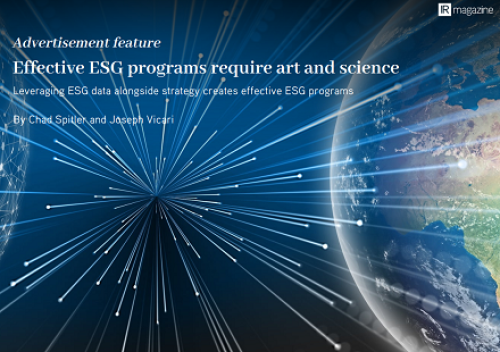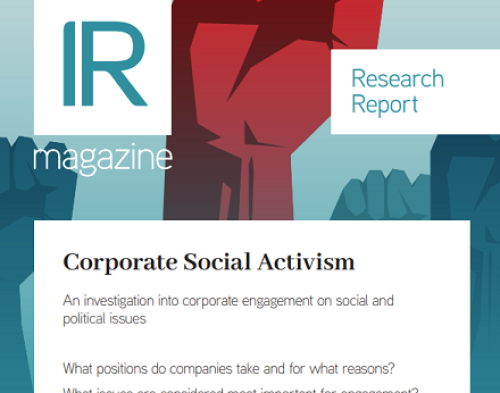Although ESG-focused ETFs make up just 4 percent of overall ESG assets in the Asia-Pacific region, research from Cerulli Associates highlights the rapid growth in the vehicles as investors seek ‘cost-efficient access to responsible investing products’.
Twenty-five ESG ETFs were launched in the region in 2020, with 31 more listed in the first half of 2021, according to the firm’s research. And fund flows have increased notably: in 2016, ESG ETFs listed in Asia-Pacific saw inflows of $159.8 mn, a figure that has jumped to more than $2 bn each year in 2020 and 2019. Net inflows in the first half of 2021 alone exceeded $1.7 bn, says Cerulli.
That has resulted in huge growth in assets under management in ESG ETFs across the region, with 167 percent growth in 2019 and 108 percent growth in 2020. A further 33 percent growth in the first half of last year brought ESG ETF assets under management to a total of $12.8 bn across the 10 markets covered by the research: Australia, China, Taiwan, Japan, Korea, Hong Kong, Indonesia, Malaysia, India and Singapore.
Cerulli notes, however, that Australia, China and Taiwan are the dominant players, accounting for 86.8 percent of total ESG ETF assets in the region in 2020.
The big three
Australia has seen ‘exponential’ growth, say researchers, with assets in ESG ETFs listed in the country growing from $156.2 mn in 2016 to $4.9 bn by June 2021. During that period, 29 ETFs with an ESG focus were listed in Australia but Cerulli predicts a ‘significant rise’ in the future. It notes that in March 2021 alone, three new ESG ETFs were launched: the BetaShares Climate Change Innovation ETF, the VanEck Global Clean Energy ETF and the VanEck MSCI International Value ETF.
In Taiwan, Cerulli notes that although just one ESG ETF was launched in 2020, six were listed in the first half of 2021, and predicts that the ‘upward trend for ESG ETFs listed in the market is likely to persist into 2022.’ Taiwan has seen assets in ESG ETFs climb from just $101 mn in 2018 to $1.2 bn in 2019 and $1.7 bn in 2020, according to Cerulli’s data.
‘Cerulli believes the sudden increase in launches is due to increased demand from institutional investors, as well as young retail investors who are attracted to the low costs of buying large stocks,’ note researchers.
‘[But] the ESG ETF market boom in the first half of [2021] could be attributed not just to demand factors, but also to fund houses scurrying to push out their ESG strategies before new regulations were introduced in July 2021. That month, [China’s] Financial Supervisory Commission issued guidelines mandating that fund managers disclose their ESG investing processes, investing methods and the international standards they have applied, in a bid to put an end to greenwashing.’
In China, Cerulli notes that although the adoption of ESG investing is relatively new, assets in ESG-themed ETFs in the country jumped from $15 mn in 2016 to $2.9 bn in 2020, with researchers adding that ‘many sustainability-themed ETFs were established in 2021, driven mainly by Beijing’s ambitious pledge in September 2020 to transform China from the world’s largest carbon emitter into a carbon-neutral nation by 2060.’
Eleven new ESG ETFs were launched in China in the first half of last year – up from just four in 2020 – with a strong focus on low-carbon or new energy.
‘Cerulli believes the government’s focus on renewable energy and the increasing number of ETF listings is setting the tone for passive investing in China’s ESG space,’ say researchers. ‘These, in turn, are expected to accelerate the use of ETFs by institutional investors and lead to gradual adoption by retail investors.’
In a separate release from Cerulli, the Boston-headquartered firm notes that, interestingly, ESG is not a priority for Chinese retail investors, despite the fact that individual investors invest heavily in ESG-themed funds.
‘An in-depth look at the top 10 ESG funds by assets under management between 2019 and June 2021 shows that the proportion of retail investors outweighed that of institutions in all 10 funds,’ says Cerulli. ‘For example, individuals held more than 90 percent each of the biggest sustainability-related thematic fund – ChinaAMC Energy Innovation Equity Fund – and the biggest ESG integration fund, Zhong Ou Responsible Investment Allocation, as of June 2021, according to Eastmoney statistics.’










